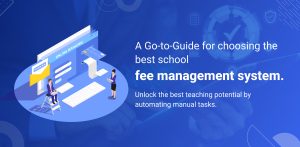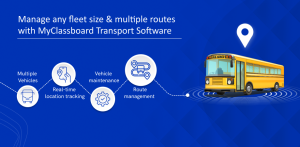The role of Augmented & Virtual reality in education & its future
The education sector is going through tremendous changes, and technology has transformed how education is delivered. School closure due to pandemics is not the only reason for moving towards digital solutions. But, the traditional methods of teaching & learning are proving to be challenging for engaging education experience with each passing year.
Research proves that e-learning enhances a learners’ retention rate from 25% to 60%, whereas in traditional teaching, the retention is 8% to 10%.
Augmented reality and Virtual reality are not new technologies. But recently, they have found increased usage in the education domain; to revamp the ways of teaching and learning with an exceptional result. In this article, we discuss the roles of Augmented reality and Virtual reality in the education sector, also what is in store for its future.
What is Augmented Reality?
Augmented reality is an interactive experience of the real world. The objects in the real world are enhanced, with computer-generated perceptual information, across various senses such as visual, audio, haptic, somatosensory, & olfactory. It involves a combination of real-world & virtual worlds, real-time interactions, and 3D rendering of objects in the virtual and real world.
The impact of Augmented Reality on education
In education, augmented reality supports the curriculum with; text, graphics, video, or audio content. AR chips integrated into content resources can be scanned to generate additional interactive resources in multimedia format.
What is Virtual Reality?
The impact of Virtual Reality on education
One of the significant applications of Virtual reality is in education. With the use of Virtual reality simulations real-life training, could be imparted easily at reduced cost and safety.
Research suggests that visual senses are much more impactful, and humans retain better memory from visual content. So, an experience-based around visuals in a virtual world makes learning impactful and favourable.
For higher education and professional training; Virtual reality can prove to be an extraordinary training method with positive outcomes. Interaction with objects in detail in three-dimension would help in object modelling, medical training, flight simulations, etc., and many similar implementations in different fields.
The challenges these technologies face
These technologies are yet to come to mainstream use, especially in education. Hence, the initial challenges associated with them are lack of awareness among teachers to use such technologies, in-efficient training, limited classroom time, even lack of proper gadgets that will build confidence and practice for continued use in teaching.
Until students have enough time to practice and mold themselves to use such technologies, they will be hesitant to explore such content. Even there is a lack of proper guidance in using such resources for studies. Affordability of such technologies comes as a hurdle of using them at mass scale for regular school curriculum.
Lack of self-efficacy for practical use or even absence of proper infrastructure for such advanced technologies may come as a challenge for students to engage with Augmented reality or Virtual reality in their curriculum.
The future of Augmented reality & Virtual reality
The education sector is going through progressive changes due to the recent uncertain times. Students have been managing their education online & attending offline classes when possible. The technological infusion had been happening; in the education sector but at a limited speed. Current times require intensive implementation of new content forms keeping up with the latest requirements.
Augmented reality & Virtual reality bring new interactive content, which can transform; how students learn and understand various concepts. With Augmented reality & Virtual reality, teachers can explore a creative method of teaching lessons. Private online learning players are experimenting with such tech-infused teaching methodologies, which has received positive reviews and student engagement. So, the future of the education sector is expecting higher inputs from Augmented reality & Virtual reality for taking education to the next level of reform.











